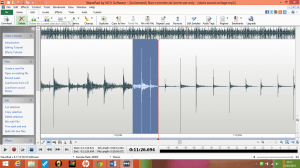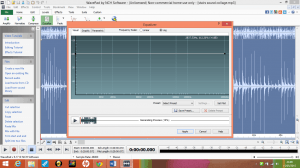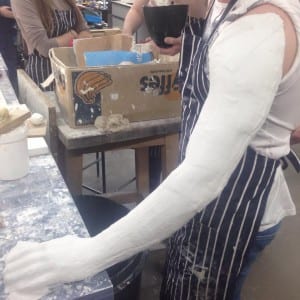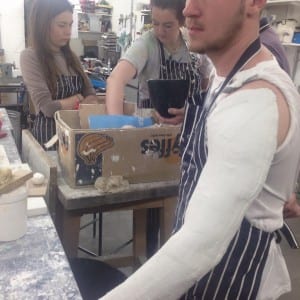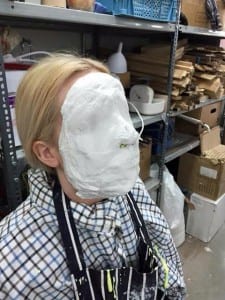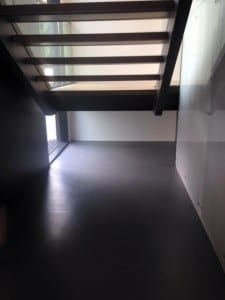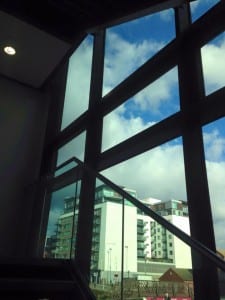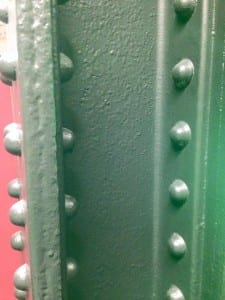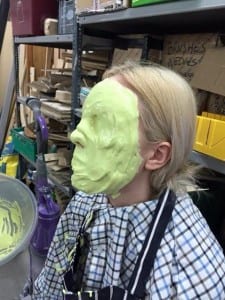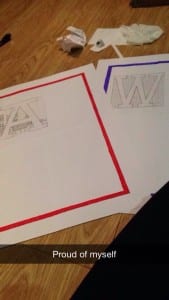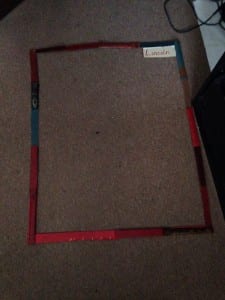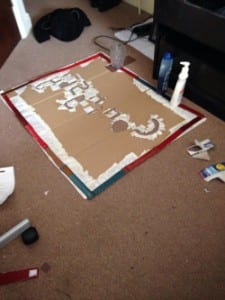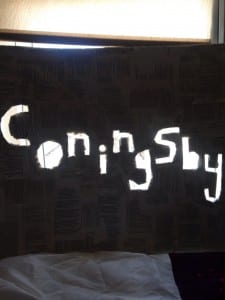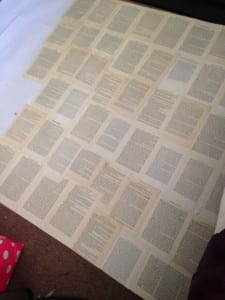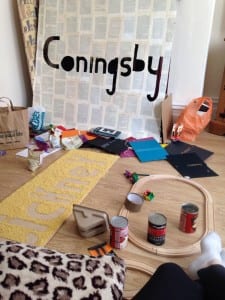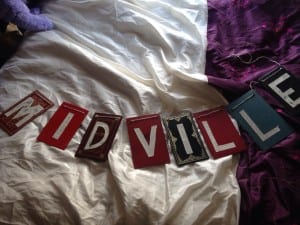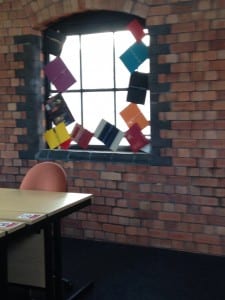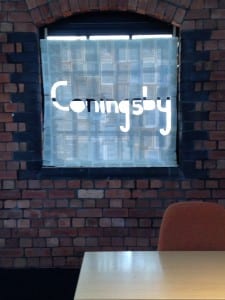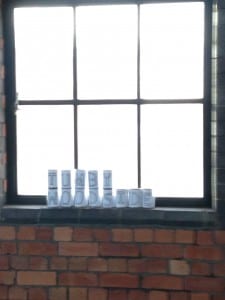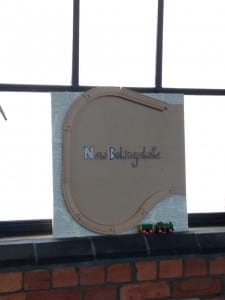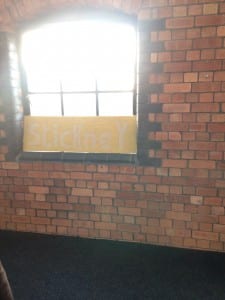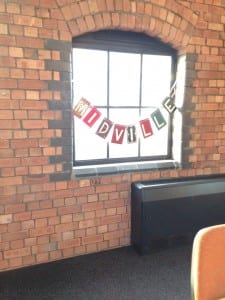Framing Statement
Our performance takes influence from physical performance art, sound art and sculpture. By combining all of these within our performance, we created a lot of layers and depth to our performance. Because we had so much within the performance we made sure that we kept each element of the performance simple enough to not distract from the main context.
When first approaching site specific we were entering a whole new world of performance. I knew buildings as a place where performance took place, however I never thought of Architecture as being performative itself. It was this performativity of buildings that first inspired our creative exploration. We spent time looking at the architecture of the library and the difference between the original architecture and the parts that had been added when it was transformed into a library. We decided to explore the staircase at the rear of the library because it is a space that is often over looked. People use the stairs all of the time but never pay attention to the performativity of the staircase itself.
The real power of site-specific work is that it somehow activates, or engages with, the narratives of the site in some kind of way. That might be with its formal architecture, or it might be with the character of the building. It might be to do with the history of that building. (McLucas cited Morgan, 1995, 47 cited Pearson, 2010, 35)
_
This quote was one of the main theories that fuelled my understanding of site-specific performance and my creativity when approaching the creation of our own performance.
The general concept behind our performance was the activation of the architecture through the use of the body and to include the present use of the building as a library.
The performance as a whole is an experiment which allows us to be constantly exploring ideas and creating new ideas to include in the performance.
__
For our performance we had three people with mod rock casts attached to them on each level of the stairwell. This was to explore the relationship between people and the site. Without people the site would stop being a staircase and become and empty room. This means that people are metaphorically a part of the building. By mod rocking ourselves to the building, it shows the metaphor in a physical instillation.
_
The other three people were continuously exploring the stairs and different ways to interact with them. We installed the body casts and left them throughout the day. We performed three times for twenty minutes during the day. Each time we performed, we switched positions allowing variety through the performance, meaning that no performance is the same. This is an exploration of the site in itself as it emphasises how the building has changed over time and how it is used differently every day, by different people.
_
The last part of our exploration was the sound collage that we had playing for the full twenty minutes of each physical performance. This sound collage, of walking up and down stairs, creates another level of exploring the use of the stairs. It explores the sound that the physical action of walking up and down stairs creates. This explores the rhythm of life and the rhythm of the stairs.

Analysis Of Process
My first inspiration came from a task that we were set in class. This task was to draw a part of the library and then switch drawings and create a transmedia response to said drawing.
_
I had to create a transmedia response to a drawing of the library’s steel support frame. I decided to create a sound collage in response as the first thing that came to mind was the transformation of the raw material being forged into a vital product for the building’s creation.
Below is the sound collage:
Here is some documentation of the process of editing the sounds.
Because the sound recordings were taken at different times of the day I had to edit each clip individually so that they would run smoothly off one another.
This experiment allowed me to open my mind to the world of performance outside of the theatre conventions. To see performance not only as the intentional theatrical performance that follows conventions; but to look at the performativity of everyday actions and of objects. For example by physically creating an installation of objects the performance of putting said objects in a specific place for a specific reason and understanding what it will represent.
_
From this we decided to look at different forms of performance art. Kira O’Reilly was one of the first artists that influenced us. Her work exploring the body and its environment was a bridge to us deciding to explore the body’s relationship with our site.
(Michael Pinchbeck, 2015)
#6 The Drawing Board: Re:Calling from traci kelly on Vimeo.
The sound used in this performance, linked with my past experiment with sound collages, caused us to include the sound collage of footsteps. The rhythm of the sound helps to emphasise the link that we are making between body and architecture. It does this by creating a strong atmosphere in which the performance takes place. The audience enter the atmosphere which automatically intrigues them and makes them really focus on and absorb the performance/instillation around them.
_
Antony Gormley
The next piece of inspiration was from an artist called Antony Gormley. He is an artist that is well known for his exploration of body in relation to space through the medium of sculpture. He creates sculptures of the human body and presents them in different spaces that create different meanings.

(Gormley, 2008)
_
This was what sparked the idea to create body casts. Body casts seemed to be the best pathway for us as none of us had any skills in the art of sculpture. We started off by creating one hand cast, which we took to the site and explored its relationship with its surrounding. Straight away we were interpreting this in many different and interesting ways. The cast had a chalky texture and was pure white which invited us to think about the shape and history of the object.
_
We thought about the history of the library, a grain factory, and began thinking about the difference between the people that would have occupied the space in the past and the people that inhabit the space now. We decided that we needed to create more casts fill the space and show a better representation of the vast amount of people that have passed through the building.
_
We spend around 100 hours in the art department creating these casts, resulting in:
-
60 books
-
40 hands
-
30 feet
-
3 faces
Now with a substantial amount of casts we could go to site and begin experimenting with placement. We decided to cast feet, faces and books as well as the original hand trial. We cast the feet because of the relationship with the body and the stair case. Feet are the main body parts that activate the stairs.
_
We decided to cast a face as an experiment. The face cast experiment created another level to our performance. Because of the detail of the cast it created a feeling of a human imprint. This creates a relationship with the people who worked in the library in the past when it was a factory. When looking at this extremely detailed cast it gave off an earie feeling and was quite disturbing to look at in ways. It has no life in it, yet it looks so life like. It dehumanises the most human part of a person. This experiment was so successful that we continue to create 3 more.
_
The book casts created a link between the rest of the casts, focusing on the architecture and the past of the building, and the modern day use of the library. These casts were also extremely detailed, which made you really focus on the physicality of the books themselves, which is opposed to the usual value of the content and knowledge that the books hold. In this sense the books also become part of the human casts as they represent the education and craving of knowledge that separates humans from the rest of the animal world. This is what a library represents, and what we wanted to convey in our performance.
_
When we first explored the cast’s positioning within the site, we had the idea to place them on the stairs because this is the most active part of the site.
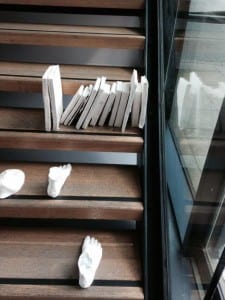
After consulting with the library staff we discovered that this was not a plausible option because of the trip hazard that it created (because the stairs were being used regularly throughout the day).
_
After receiving this news we had to place the casts around the stairs in more interesting and obscure ways to create the same effect. We placed the casts around the static performers and also around the multiple window ledges that cover each side of the staircase and ledges that thrust out of the original architecture of the building.
_
When we first installed the casts on these ledges we realised that it worked better than originally planned as the ledges represented the book shelves of the library and the idea of archiving.
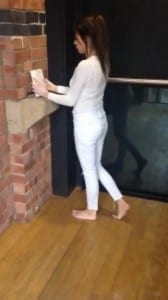
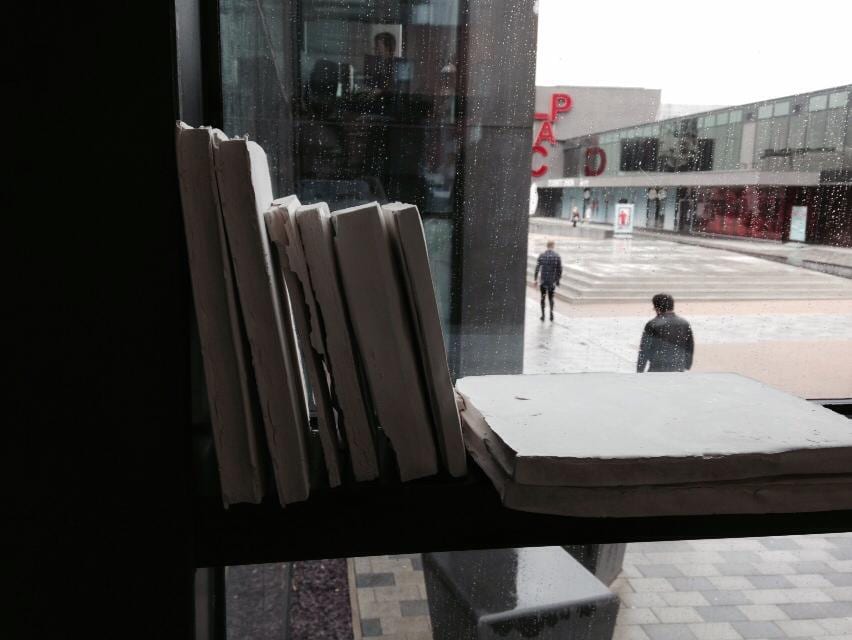
The idea of people creating a space, and space affecting people, is what brought us to the idea of having re-attachable mod rock casts that we could have on us. We wanted to convey the importance that people have to the building. People created the building and use the building. In this respect, people are part of the building. The building is designed and created to be compatible with the human body. By physically casting ourselves to part of the building we are physically representing this metaphor of being a part of the building. The fact that we used ourselves as part of the instillation as well as the casts represents the currant architecture of the library. The new and the old. The performers representing the newest parts of the library and the body casts representing the preserved history of the building.
_
This could also be representative of the amount of time that students spend in the library. Our audience, the vast majority of which are the students that use the library, would find this understanding a lot easier to read as some of the students spend hours on end in the library doing work and research. The people that spend a large amount of the time in the library become familiar with the building and begin to feel a connection with it. This ability to create relationships with objects and places as well as other people I one of the things that represent the human consciousness in a very bold manor. This makes people feel a part of the library as they feel a sense of ownership of their surroundings that they know so well. Our performance creates a physical image of this human emotion that people overlook.
The second part of our performance is the physical exploration of the stairs. During our exploration of our site we explored the stairs by truly thinking about their design and use. When people walk up and down the stairs they don’t think about what exactly it is that they are doing. They take it for granted and just focus on the level that they need to reach. Because we fully explore the variety of ways to go up and down the stairs we are highlighting the process that has to be completed when using stairs. One example of our exploration is that we slowly moved up and down the stairs focusing on our precise movement and on each individual step as its own physical object.
_
By adding this aspect of the performance we explored into further depth the relationship between body and architecture. The audience will watch us and in turn be forced to think about the action of walking on stairs and how they would scale the building without this essential feature of the building.
_
Michael Pinchbeck’s work on The Drawing Board was an influence that helped us add to our performance. We has heard about this work but had not applied it to our performance until very late on in our process. We took their idea of rolling chalk down the stairs and applied it to our own performance. On the last segment of our physical performance we took some of the casts that we had made and dropped them down the stairs. This was to explore the idea of the disintegration and decay.
_
Time causes decay and everything decays; buildings, people and ideas. The physical disintegration of our casts represent the disintegration of a building over time. It also represents the disintegration of the past from our minds. The building used to be a factory and has now been adapted into a library. A lot of people have no idea of the history of the building that they believe to know so well. The memories of the past decay along with the building and the people that used it. The body also decays over time. The physicality behind the crumbling of these casts over the architecture shows the relationship that everything has with the past and with time itself.
_
_
The Drawing Board worked very well as an influence for us because of the fact that they used chalk and our casts were made of plaster which has a very similar texture to chalk and leaves behind a chalky residue.
_
Costume was the last decision that needed to be decided upon. We had many ideas ranging from nudity to wearing pure white full body suits. Because we were representing the body and the architecture, the most effective way to convey this raw idea would have been through the body’s purist form (naked). We decided against this idea because of the fact that it would have been inappropriate for our specific site. The stairwell has windows completely covering each side which allows members of the public that walk by to see inside. This could have been indecent if any children or people who would be offended by nudity would walk past. We decided in the end to wear all white as it matched with the casts. This link between our costumes and the casts allowed the audience to associate the colour white with the form of the body for the entirety of the performance.
_
Performance Evaluation
After the day of performing, I can confidently state that it was a success. We achieved our goals of exploring the performativity and relationship between body and architecture. As our performance itself was an experiment we managed to learn a different way of performing through creating an instillation, becoming part of an instillation and improvising the honest exploration of the stairs. Also the fact that we ourselves were experimenting during the performance allowed u to make sure that no performance was the same. By the time the third performance had come we had come up with new ideas and managed to explore these ideas as we performed. During the first two performances we didn’t touch the casts and we realised that this was a key part of the performance that we had missed. In the third performance we were a lot more active with the casts. This was when we rolled the casts down the stairs and analysed the deconstruction and disintegration of them. By the end of the performance we were left with a lot of fragmented casts that perfectly reflected the exploration of time and the change in the architecture and in the people that inhabit the building.
_
Another thing that we incorporated during the final performance was the movement of the books and casts. The building itself is forever changing and the people inside are forever moving and changing positions. We moved the books to different shelves and had the static performers interacting with them to create a stronger link between the body having a huge effect on the space and the use of the building.
_
I knew that we had created an interesting performance because as I was performing I realised that a lot of people outside were pointing and stopping to look at what was happening inside the stairwell. Also I noticed that a lot of people that were going to use the stairs would realise that something was happening; our performance must have sparked their interest because they would then return with more people to observe the performance.
_
Although we did get a lot of interest, we didn’t have a massive audience. A lot of the reasoning behind this would have been people not using that staircase very often, and being intimidated by their original image of the staircase that they know as being empty and quite.
________________
Bibliography
Gormley, A. (2008) Reflection II. [image] Available at: http://www.antonygormley.com/sculpture/chronology-item-view/id/2058/page/224#p1 [Accessed 18 Apr. 2015].
Michael Pinchbeck, (2015) #6 The Drawing Board: Re:Calling. Available at: https://vimeo.com/112927930 [Accessed 1 Apr. 2015].
Pearson, M. (2010) Site-specific performance. Basingstoke: Palgrave Macmillan.
